Art Fairs
Vienna Contemporary Has a New Look and New Leadership, But It Remains a Staid, Regional Fair
The art fair continues its soul-searching to find its rightful place amid a stacked fair calendar.
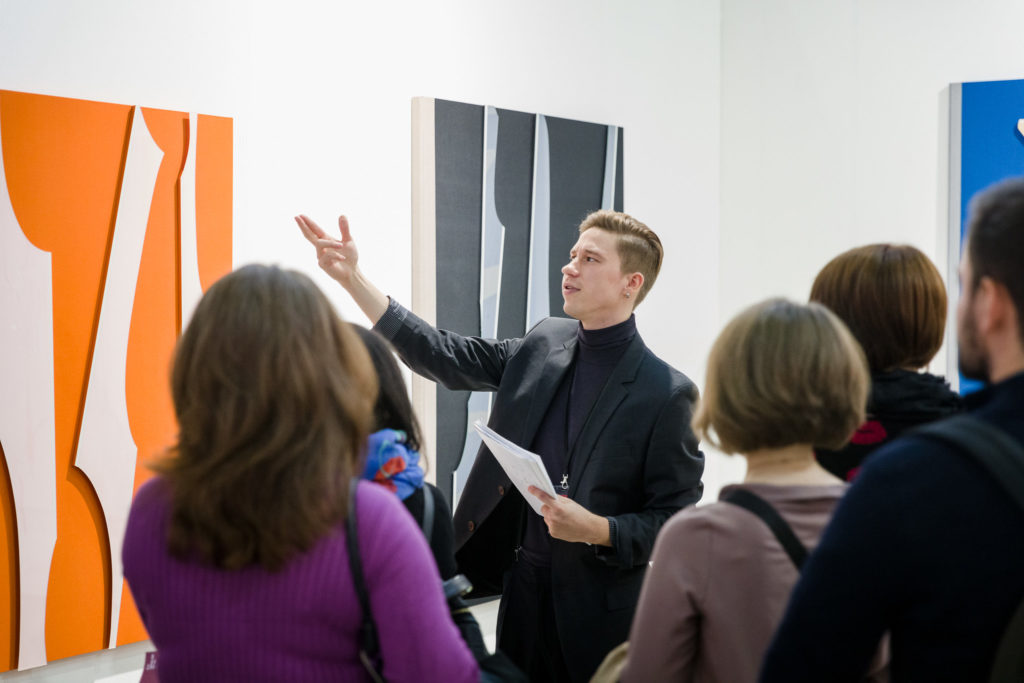
The art fair continues its soul-searching to find its rightful place amid a stacked fair calendar.

What’s in a name? The art fair viennacontemporary has emerged from an exercise in dramatic renaming and rebranding, but years on—not to belabor the Shakespearean analogy—is the aroma really any different?
The preeminent Austrian art fair, which closed today after a four-day run in the capital, has gone through name changes, power changes, and dates changes in recent years as it searches for just the right spot and identity within a competitive fair calendar.
However, despite all the transformations in recent years, when the fair opened last week, it remained decisively regional, its raison d’être continuing to be a strong central and eastern Europe profile, plus a singular-minded core of Austrian galleries.
When the fair closed yesterday, some questions remain about just how feasible a format a regional fair continues to be amid a contracting market. But Vienna’s powerhouse of institutions could just be its saving grace.
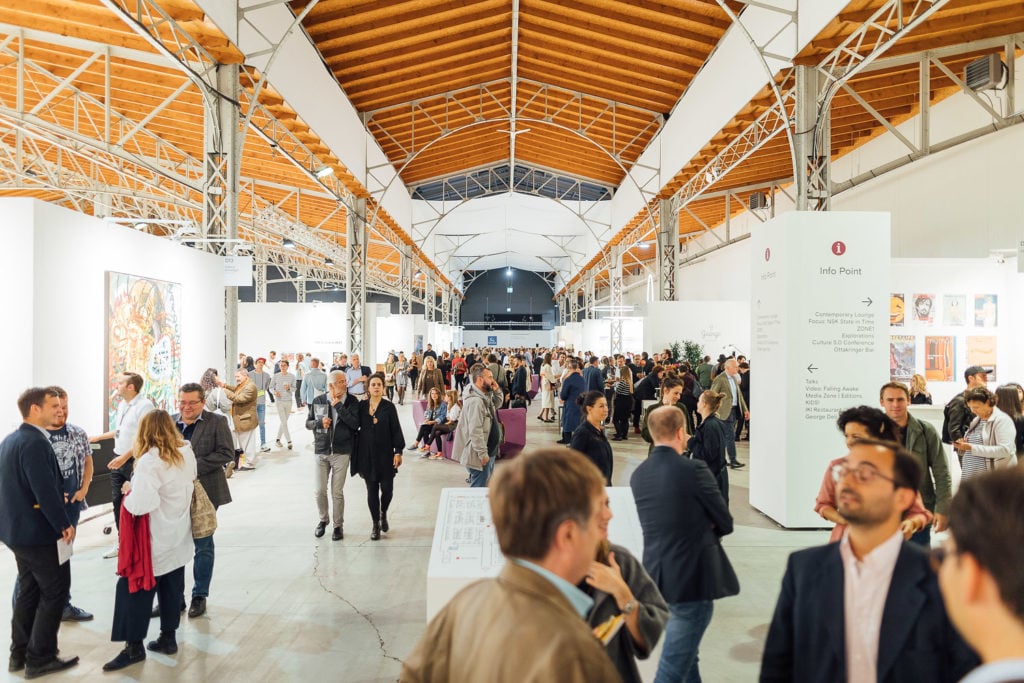
View from viennacontemporary. © kunst-dokumentation.com
In 2015, VIENNAFAIR rebranded itself viennacontemporary and, at the same time, fixed a new September date and moved locations to Vienna’s Marx Halle, a former cattle market. Meanwhile, management changed hands, and the company VF Betriebsgesellschaft mbH took it over from FIAC and Paris Photo’s owners, Reed Exhibitors. The change of hands shifted its long-held focus on central and eastern European art in favor of internationalization—but, not atypical of Austria, it was all buoyed by Russian investment, in this case, from arts patron Dmitry Aksenov.
Despite its more international appeal, the scales are still tipped: This year’s edition comprised 110 galleries in total, with 38 percent coming from Austria and another 35 percent from nations in central and eastern Europe. Managing director Renger van den Heuvel emphasized that this continued gaze eastward is what “makes the fair unique.” In a time of complaints of fatigue from collectors, press, and art enthusiasts alike over a too-crammed fair calendar, maybe specificity is a strong suit and van den Heuvel has a point.
However, the booths felt undaring, with conservative hangs of painting and sculpture pervading as dealers tried to play it safe within a tentative market.
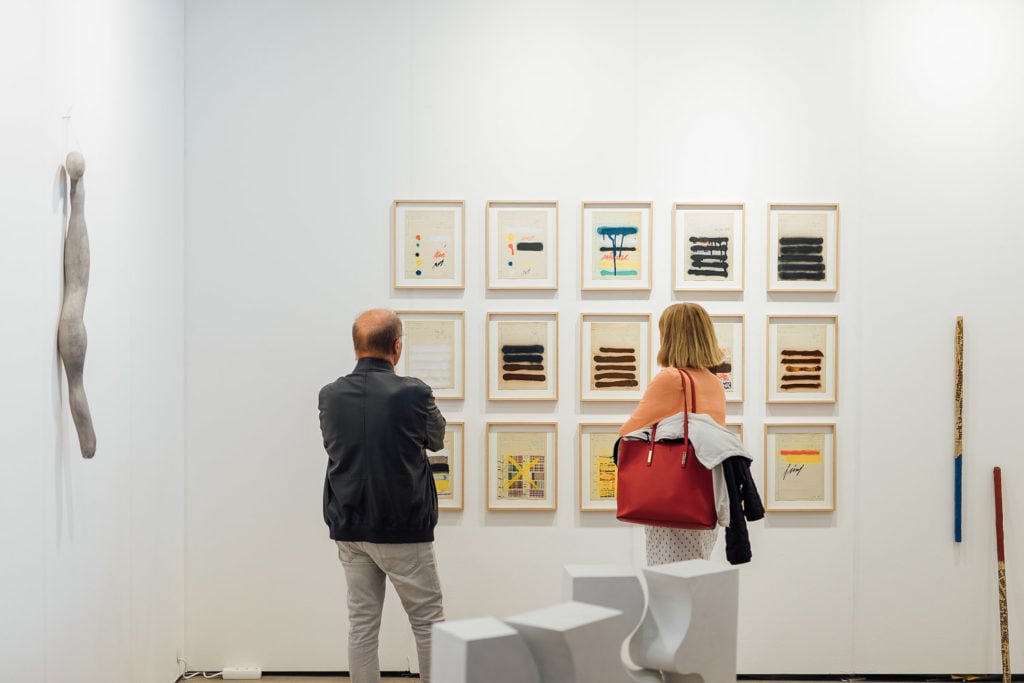
View from viennacontemporary. © kunst-dokumentation.com
Vienna mainstays included Christine König Galerie, which showed a cross-section of the gallery’s stable, highlighting collages by Bosnian artists Radenko Milak and Roman Uranjek, Dates for a Subjective Timeline of the Climate Change (2018), of which Greta Thunberg might be proud. It also showed a “project space” wall of works, each priced under €3,000 ($3,270) by Ovidiu Anton and Maruša Sagadin.
König’s perception of the fair this year? “More viewers, less buyers.” She added that her presence is not so much a swift turnaround business decision, but that, rather, as Vienna dealers, they “have to support the Vienna art scene.”
A less than lucrative time was also had by Piera Ravnikar, whose Ljubljana gallery is under two years old and which received a grant from Slovenia’s ministry of culture for its 270-square-foot booth, which was priced at €7,500 ($8,177). (The nation was the official focus country at the fair this year.) The dealer showed work by three young artists, including paintings by Nina Čelhar priced at €800 to €4,800 ($872–$5,233), none of which sold. “You need to fight a different battle [in Slovenia] to convince people to buy art,” she said. “We’re here to start the journey.”
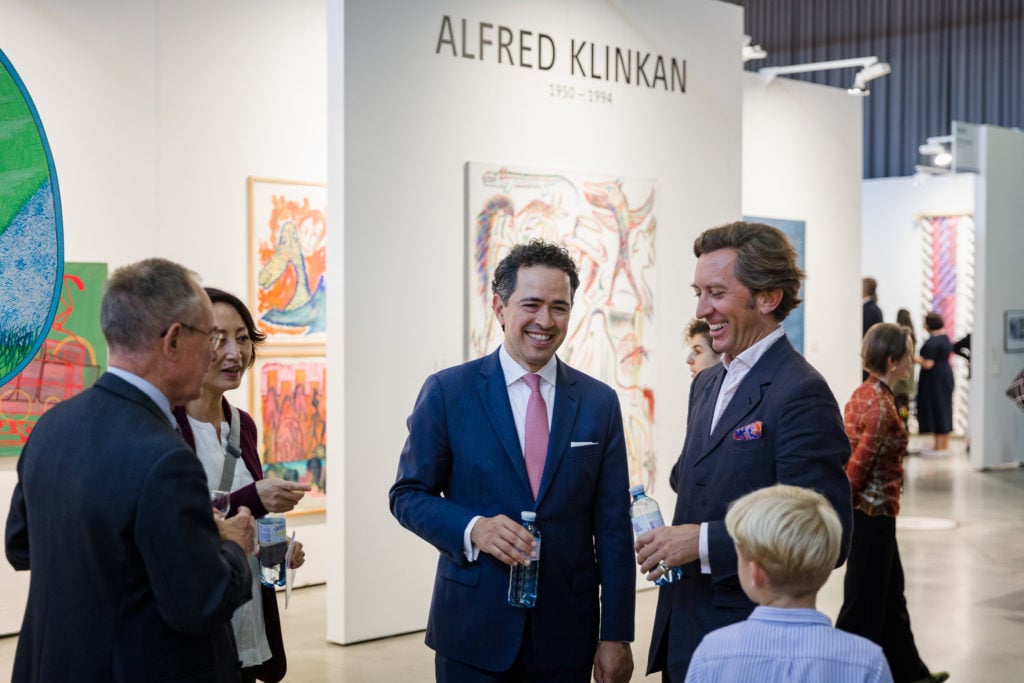
View from viennacontemporary. © kunst-dokumentation.com
On the other side of the spectrum, Galerie Thaddaeus Ropac reported the sale of a photograph by Vienna-based artist VALIE EXPORT for €35,000 ($38,160). Elsewhere, at the Romanian-focused, Berlin-based gallery Plan B, a work by Horia Damian sold to a Berlin-based collector for €16,000 ($17,445). Relatively “large” sales included a monotone abstract painting by Rudolf Polanszky, going for €120,000 ($130,835) at Vienna-based gallery Konzett, while at the lower-end of the price range, Jecza Gallery sold two works by Ciprian Radovan for €3,200 ($3,489) and €2,850 ($3,107), respectively.
So does viennacontemporary remain viable as a regional fair? As a general rule: yes. Galleries come with conversations already in play, and many manage to close those deals. But collectors won’t be having to fight it out for the big hitters. This fair isn’t exactly soaring on the Richter scale.
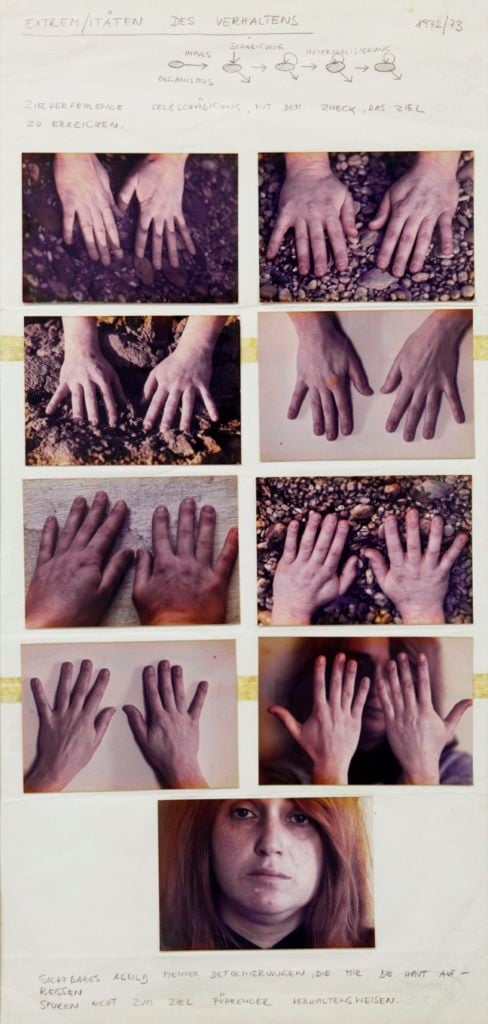
VALIE EXPORT EXTREM / ITÄTEN DES VERHALTENS (1972). Photocollage courtesy of Galerie Thaddaeus Ropac, London, Paris, Salzburg. © VALIE EXPORT/Bildrecht Wien, 2019
Visitors from Belgium, France, Switzerland, and Germany bolstered the local collector scene on preview day last Thursday, although sales were slow and measured. However, what Vienna may lack as an independently pumping international art market, it certainly has in museum edge. Sales hastened when the artist was aligned with some of Vienna’s well-known art centers: At Galerie Emanuel Layr, a work by Tillman Kaiser—who’s currently showing at Vienna’s Secession museum—went for an undisclosed sum between €7,000 to €10,000 ($7,632 to $10,903).
Another strong moment at the fair was the “Explorations” section, curated by the Belvedere’s chief curator Harald Krejci and showcasing works made between 1945 and 1980. Highlights from the booth included the forgotten Georgian artist Vakhtang Kokiashvili at Window Project. Known during his lifetime for making stained-glass windows in Soviet architecture, two of his small-scale tempera-on-cardboard paintings sold at the fair within a modest price range of between €700 and €8,000 ($763 and $8,722).

SPERLING, Thomas Geiger. © viennacontemporary, photo: kunst-dokumentation.com.
Kunstverein Graz’s director Kate Strain and the director of the Salzburg International Summer Academy of Fine Arts, Hildegund Amanshauser, were also seen wandering through Zone 1, an area of the fair curated by Fiona Liewehr and funded by the BKA, Austria’s ministry for arts and culture. Liewehr chose to dedicate the section to artists under the age of 40 who had some connection to Austria, saying that “it gives younger artists visibility within the fair.”
While Galerie Raum mit Licht sold six works by Titania Seidl for between €1,000 and €4,000 ($1,090 and $4,361) as part of the section, its strongest artists remained unsold, including an installation by Julian Turner at Filiale, which playfully recreated the mausoleum of benevolent Yugoslav dictator Josip Broz Tito.
Over the weekend, the ballots were counted for Austria’s federal election, and the tenuous political climate could occasionally be felt within the fair’s walls too. Austrian and Berlin-based Markus Proschek’s paintings and sculpture at SVIT, priced at between €3,600 and €7,500 ($3,925 and $8,177) probably cut a little too close to the bone politically: a toppled male torso wearing a Fred Perry shirt—a brand favored by members of the far right—and a speared Saint Sebastian dripping with blood.
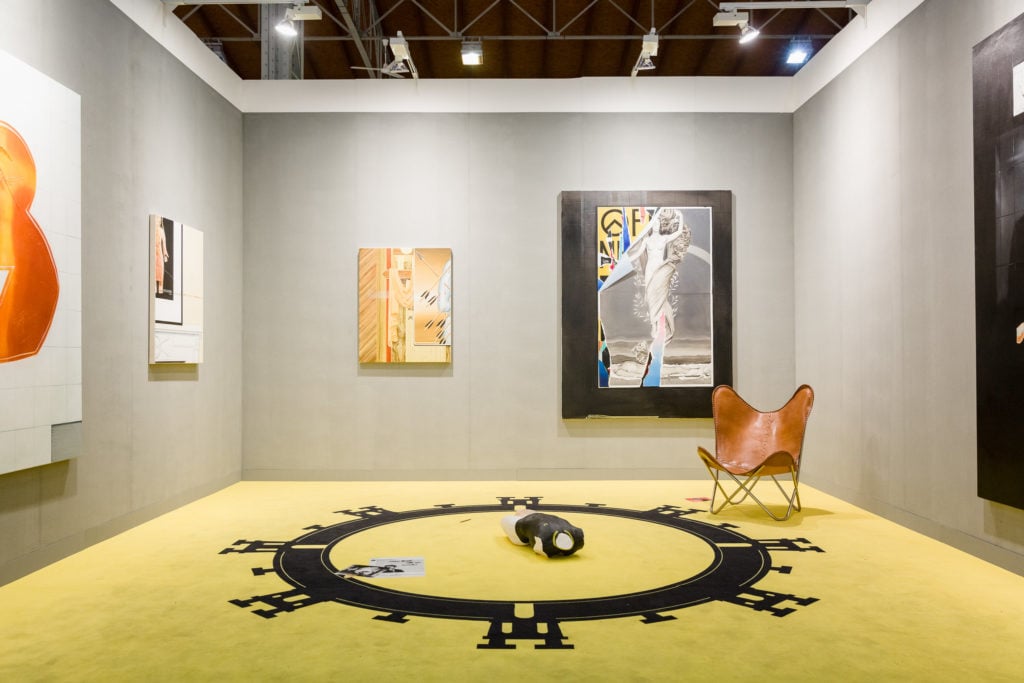
SVIT, Markus Proschek, © viennacontemporary, photo: kunst-dokumentation.com.
Around closing time at the fair on Sunday, the center-right People’s Party and its leader, Sebastian Kurz, reclaimed Austria’s leadership with 37 percent of the vote, while the far-right Freedom Party, tarnished by a corruption scandal, sharply declined. It remains unclear who Kurz will form his coalition government with this time around, but there’s some fear that his party reeks of the same political rhetoric as before.
As with viennacontemporary, so goes the old adage: new frame, same game.